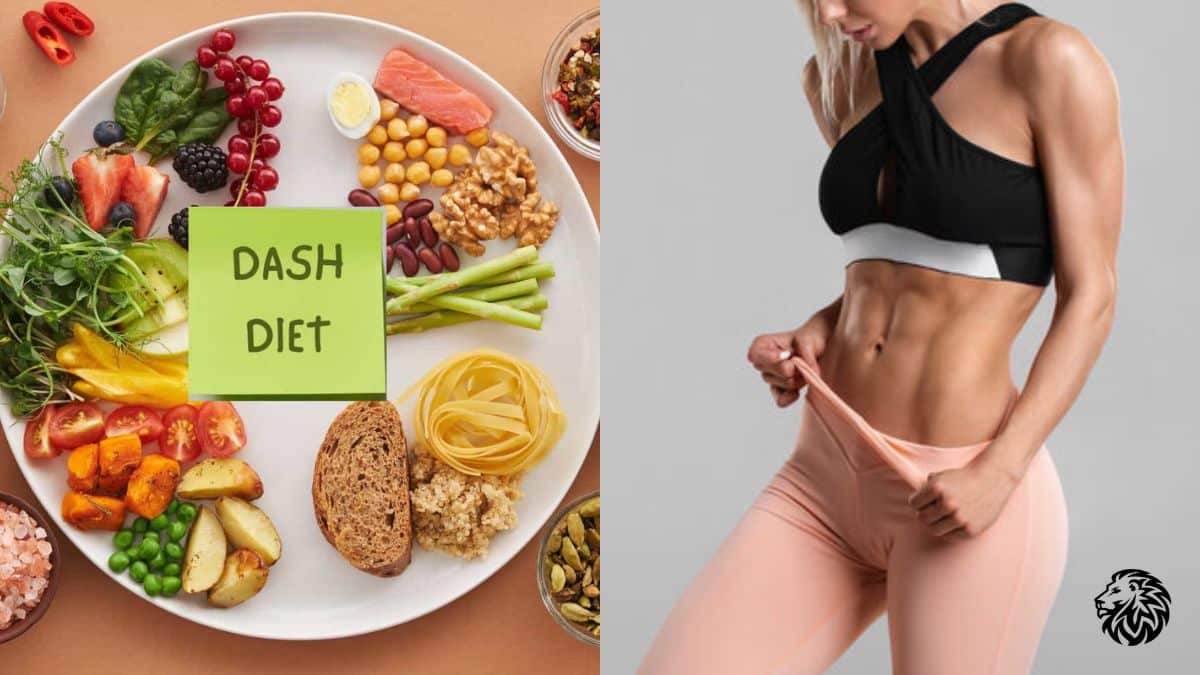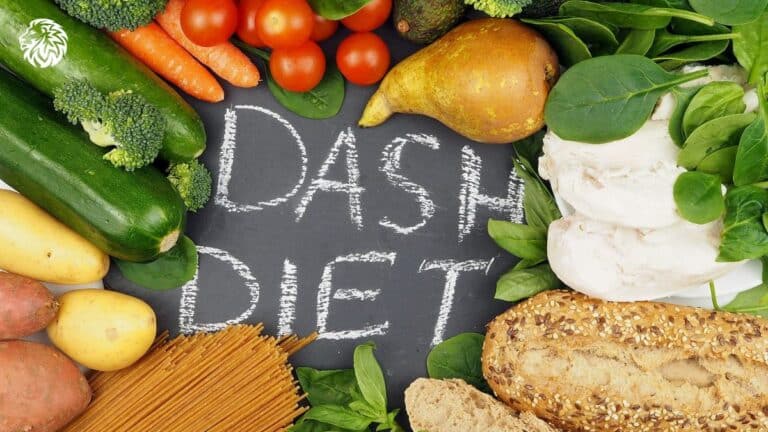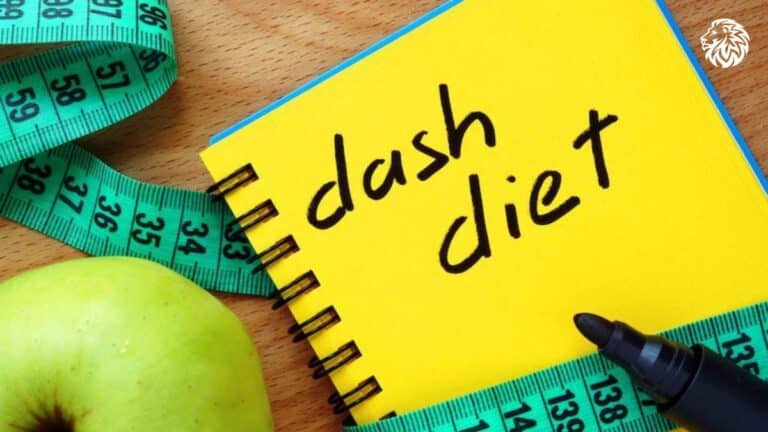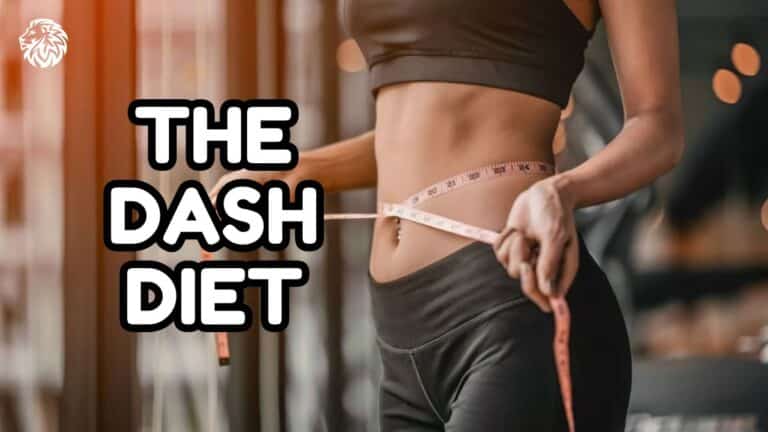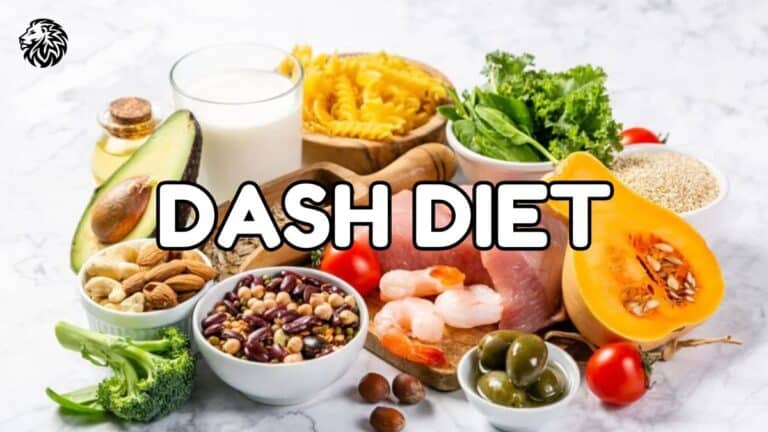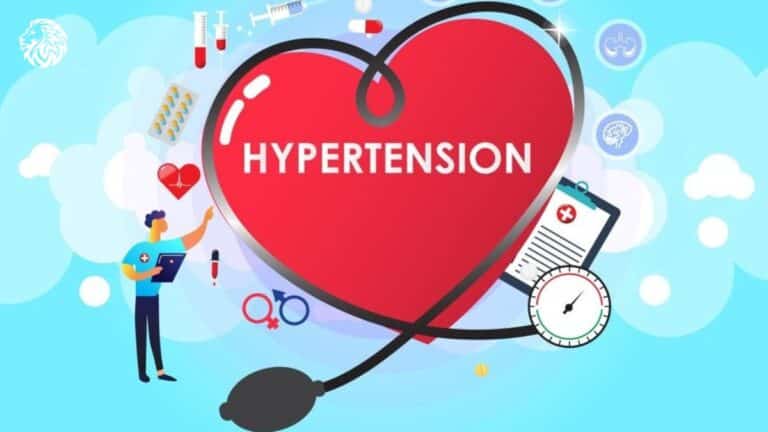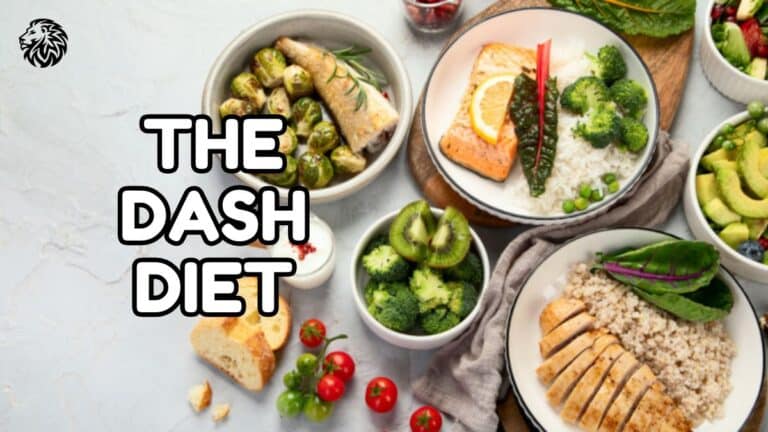The Dietary Approaches to Stop Hypertension (DASH) diet is primarily known for lowering blood pressure. However, with its focus on nutritious, balanced eating, the DASH diet has also become popular as a weight-loss approach. Many people wonder if this heart-healthy diet can also help them shed pounds. Let’s dive into how the DASH diet works and how it might fit into a weight-loss plan.
Understanding the DASH Diet
The DASH diet was originally developed to reduce hypertension (high blood pressure) by the National Institutes of Health (NIH). It focuses on foods rich in nutrients like potassium, calcium, and magnesium, which are beneficial for heart health. At its core, the diet promotes whole foods and minimizes processed options.
Key components of the DASH diet include:
- High intake of fruits and vegetables: These foods are low in calories and rich in nutrients, fiber, and antioxidants.
- Whole grains over refined grains: Whole grains provide more fiber and nutrients, helping with digestion and satiety.
- Lean protein sources: The diet emphasizes lean meats, poultry, fish, and plant-based proteins, which help manage hunger.
- Low-fat or non-fat dairy products: These provide calcium without high levels of saturated fat.
- Limiting sodium intake: Keeping sodium low is essential in DASH, which supports heart health.
The DASH diet limits foods high in saturated fat, sugar, and added salt, which can lead to weight gain and other health concerns if consumed excessively.
How the DASH Diet Supports Weight Loss
The DASH diet wasn’t initially created for weight loss, yet its focus on balanced nutrition and whole foods lends itself naturally to helping people shed extra pounds. Here’s a closer look at the elements of the DASH diet that support weight loss and why they’re effective.
1. Focus on Whole, Unprocessed Foods
A central principle of the DASH diet is choosing whole foods over processed ones, which tend to be calorie-dense and nutrient-poor. Processed foods often contain high amounts of added sugars, unhealthy fats, and empty calories, which can lead to weight gain. In contrast, whole foods—like vegetables, fruits, lean proteins, and whole grains—provide essential nutrients without excessive calories. By focusing on these nutrient-rich options, the DASH diet helps you feel full and satisfied without the calorie overload, making it easier to control your overall intake.
2. High Fiber Content for Satiety
Fiber is a major component of the DASH diet, found abundantly in vegetables, fruits, and whole grains. High-fiber foods are essential for weight loss because they promote satiety, or a feeling of fullness, which can reduce the temptation to snack or overeat. Fiber slows down digestion, leading to a steady release of energy and helping control hunger between meals. Moreover, high-fiber foods are generally lower in calories per serving compared to processed snacks or refined grains, so you can enjoy satisfying portions without consuming excessive calories.
3. Balanced Macronutrients for Stable Energy Levels
The DASH diet carefully balances proteins, healthy fats, and complex carbohydrates. Each of these macronutrients plays a specific role in weight management:
- Lean Proteins: The diet’s focus on lean proteins like chicken, fish, and plant-based options helps maintain muscle mass, which is crucial for a healthy metabolism. Protein also helps curb hunger, as it’s more filling than carbs or fats alone.
- Complex Carbohydrates: Whole grains, a staple of the DASH diet, provide complex carbs that break down slowly, supplying steady energy without causing blood sugar spikes. Stable blood sugar levels prevent energy crashes that often lead to overeating.
- Healthy Fats: While the DASH diet is generally low in fat, it allows healthy options like olive oil, nuts, and avocados. These fats are satisfying and can help reduce the desire to snack excessively.
By offering a balanced approach to these nutrients, the DASH diet helps stabilize energy levels, which supports better appetite control and reduces the urge for unhealthy snacking.
4. Portion Control and Awareness of Serving Sizes
The DASH diet emphasizes portion control and appropriate serving sizes, which is vital for weight management. The diet doesn’t restrict any food groups completely, but it suggests controlled portions for each food type. This approach teaches a balanced relationship with food, helping individuals become more aware of how much they eat without feeling deprived. By following DASH’s portion guidelines, people can enjoy a variety of foods in moderation, which can naturally reduce calorie intake without the feeling of strict dieting.
5. Limiting Sugary and Processed Foods
Sugary foods and refined carbohydrates contribute to weight gain due to their high calorie content and low satiety. These foods can also cause blood sugar spikes, which lead to hunger shortly after eating. By limiting these items, the DASH diet reduces the empty calories that add to weight gain and replaces them with nutrient-dense options that keep you full longer. The restriction of added sugars also means fewer cravings for sweets, a common hurdle for people aiming to lose weight.
6. Nutrient-Dense Choices for Fewer Cravings
Because the DASH diet encourages a variety of nutrient-dense foods, it helps ensure that your body gets the vitamins and minerals it needs to function optimally. Nutrient deficiencies can sometimes lead to cravings, especially for sugary or fatty foods. By focusing on nutrient-rich options, DASH supports your body’s needs, reducing the likelihood of cravings that can sabotage weight loss efforts. For instance, potassium-rich foods (like bananas and leafy greens) and magnesium (in nuts and seeds) can help regulate hunger and promote energy balance.
7. Encourages a Healthy Relationship with Food
Unlike restrictive diets, DASH promotes a healthier, more balanced approach to eating that doesn’t eliminate any food groups entirely. By allowing controlled amounts of carbs, fats, and proteins, DASH encourages a flexible and sustainable way of eating. People are more likely to stick to the DASH diet long-term because they don’t feel deprived, which is essential for successful weight loss. This emphasis on balance, combined with whole foods, allows for natural weight control without the feeling of constant restriction.
The DASH diet’s focus on nutrient-dense foods, fiber, and balanced macronutrients creates a powerful foundation for weight loss. Its emphasis on whole foods and portion control allows for a sustainable, healthy approach to managing weight. By avoiding extreme restrictions and promoting a variety of food choices, the DASH diet not only helps lower blood pressure but also naturally supports weight management for those looking to lose or maintain their weight.
How to Adapt the DASH Diet for Weight Loss
While the DASH diet promotes health and weight management on its own, certain adaptations can make it even more effective for weight loss. By incorporating some strategic changes, you can tailor the DASH diet to help create a calorie deficit while still reaping its benefits.
1. Focus on Calorie Control
Although the DASH diet doesn’t strictly limit calories, calorie control is essential for weight loss. To adapt DASH for weight loss, consider:
- Reducing Portions: Scaling down portions of calorie-dense foods like whole grains, nuts, and oils can help reduce overall calorie intake. This doesn’t mean eliminating these foods—just enjoy them in moderation.
- Choosing Low-Calorie, High-Volume Foods: The DASH diet includes many low-calorie, high-volume foods, especially fruits and vegetables. These foods fill you up without packing on calories, making it easier to eat fewer calories while feeling satisfied.
You might find it helpful to estimate a daily calorie target that aligns with your weight loss goals, then use portion control to meet this target while following DASH principles.
2. Integrate Regular Exercise
Exercise complements the DASH diet by increasing calorie expenditure, helping you create a calorie deficit necessary for weight loss. DASH promotes overall health, and regular physical activity further enhances its benefits. Aim for a mix of cardio and strength training exercises to boost metabolism and support muscle mass:
- Cardio Activities: Brisk walking, jogging, cycling, or swimming can burn calories and improve heart health.
- Strength Training: Lifting weights or doing bodyweight exercises (like squats or push-ups) helps build lean muscle, which increases metabolism and improves body composition.
Incorporating 150 minutes of moderate exercise or 75 minutes of vigorous activity per week, as recommended by health experts, can enhance the weight-loss effects of the DASH diet.
3. Practice Mindful Eating
Mindful eating encourages you to pay attention to hunger and fullness cues, which can prevent overeating. The DASH diet’s emphasis on whole foods aligns well with mindful eating, as it helps you appreciate flavors and textures without the distraction of processed ingredients. Key tips for mindful eating include:
- Eat Slowly: Taking your time with each bite allows your body to signal when it’s full, preventing you from accidentally overeating.
- Avoid Distractions: Eating without screens (like your phone or TV) allows you to focus on your meal, which can reduce mindless snacking.
- Appreciate Each Bite: Paying attention to flavors and textures can make meals more satisfying, which helps control portions naturally.
Mindful eating encourages a positive relationship with food, which can make weight loss more sustainable over the long term.
4. Prioritize Low-Calorie, High-Fiber Foods
Fiber-rich foods are staples of the DASH diet and play a critical role in weight loss by promoting fullness and slowing digestion. To adapt DASH for weight loss, emphasize these foods even more:
- Fill Half Your Plate with Vegetables: Leafy greens, bell peppers, broccoli, and other vegetables are low in calories but high in fiber and nutrients. Making these a large portion of your meals can increase satiety without excess calories.
- Enjoy Fruits Moderately: While fruits are healthy and encouraged on DASH, they contain natural sugars. For weight loss, focus on lower-sugar fruits like berries and limit higher-sugar options like bananas to moderate portions.
- Add More Whole Grains Over Refined Grains: Foods like quinoa, brown rice, oats, and whole-wheat pasta contain more fiber and nutrients than refined grains, helping you feel satisfied with smaller portions.
By focusing on these high-fiber foods, you’ll experience longer-lasting fullness, making it easier to stay within your calorie goals without feeling deprived.
5. Choose Healthy Fats in Moderation
The DASH diet allows heart-healthy fats from sources like olive oil, nuts, seeds, and avocados. These fats are beneficial for health, but they’re calorie-dense, so moderation is key when adapting the diet for weight loss:
- Measure Portions of Fats: Instead of free-pouring olive oil or snacking on handfuls of nuts, measure out portions to control calories.
- Limit High-Fat Additions to Meals: While fats improve satiety, it’s easy to overdo it. Aim to add small amounts of healthy fats, like a tablespoon of olive oil in a salad or a small serving of avocado on toast.
Balancing fats ensures you get the health benefits without consuming unnecessary calories, supporting weight loss while keeping you satisfied.
6. Reduce Sodium for Improved Water Balance
The DASH diet is inherently low in sodium, which not only helps with blood pressure but can also reduce water retention. When you reduce sodium, you may notice a decrease in bloating and excess water weight, making you feel lighter and leaner. Here’s how to keep sodium low:
- Avoid Processed Foods: Processed foods are the main source of hidden sodium, so stick to fresh foods whenever possible.
- Season with Herbs and Spices: Instead of salt, use herbs, garlic, pepper, and spices to flavor your meals. This enhances taste without adding sodium, keeping your body from retaining excess water.
Lower sodium can be a useful adaptation for those wanting quicker visible results, as less water retention can contribute to a leaner look.
7. Monitor Your Protein Intake for Muscle Maintenance
While DASH provides moderate protein, people aiming for weight loss may benefit from slightly increasing protein intake. Protein helps preserve lean muscle during weight loss, which is important for maintaining metabolism. To ensure you’re getting enough protein:
- Include Protein with Every Meal: Add lean proteins like chicken, fish, eggs, Greek yogurt, tofu, or legumes to each meal.
- Use Plant-Based Protein Sources: Lentils, beans, and quinoa provide fiber along with protein, making them ideal for staying full on fewer calories.
Balancing protein intake with the rest of DASH’s recommendations can help ensure that weight loss comes from fat rather than muscle, keeping your metabolism strong.
8. Stay Hydrated for Better Appetite Control
Drinking enough water can support weight loss by helping control appetite and reducing the chance of mistaking thirst for hunger. While DASH doesn’t specify a hydration guideline, staying well-hydrated complements its whole-food approach:
- Drink Water Before Meals: A glass of water before meals can help you feel fuller, potentially reducing portion sizes.
- Choose Water Over Sugary Drinks: Avoiding sugary beverages further reduces calorie intake and aligns with DASH’s focus on natural, unprocessed foods.
Proper hydration also supports digestion, energy, and overall health, reinforcing the DASH diet’s goals while aiding weight loss.
Summary: Making DASH a Weight-Loss-Friendly Diet
Adapting the DASH diet for weight loss is simple and sustainable with a few targeted adjustments. By managing portions, choosing high-fiber foods, practicing mindful eating, and adding regular exercise, you can make DASH an effective tool for weight loss. These strategies not only support calorie control but also promote a healthy, balanced approach to eating that’s easy to maintain long-term. With these adaptations, DASH can be both heart-healthy and waistline-friendly, providing a well-rounded approach to achieving and sustaining weight loss.
Sample Day on a DASH Diet for Weight Loss
Here’s a sample menu that follows DASH guidelines while keeping calories in check:
- Breakfast: Greek yogurt with fresh berries, a small handful of almonds, and a sprinkle of chia seeds
- Lunch: A large salad with leafy greens, cherry tomatoes, cucumber, a small portion of grilled chicken, and a vinaigrette dressing
- Snack: Carrot sticks and a small serving of hummus
- Dinner: Grilled salmon with a side of steamed broccoli and a small serving of quinoa
- Dessert: Fresh fruit, like an apple or a small bowl of mixed berries
This menu includes high-fiber, low-calorie foods that can keep you satisfied without excessive calories.
Benefits of DASH for Weight Loss
- Sustainable Approach: DASH isn’t a fad diet. Its focus on whole, balanced foods makes it sustainable long-term. People are more likely to stick with it compared to restrictive diets.
- Reduced Cravings: The combination of fiber, lean protein, and whole grains in the DASH diet helps stabilize blood sugar. Balanced blood sugar can reduce cravings, helping you avoid unhealthy snacks.
- Improved Energy Levels: By emphasizing nutrient-dense foods, the DASH diet supports consistent energy levels. The avoidance of sugar highs and crashes often associated with refined carbs means more steady energy throughout the day.
- Heart Health and Weight Control: Excess weight and heart health are closely related. Since DASH is heart-healthy, it can also indirectly benefit weight management by supporting overall well-being.
Potential Drawbacks for Weight Loss
While the DASH diet is beneficial for many people, it may not be the best fit for everyone, especially if you have specific weight-loss goals:
- Not Calorie-Focused: Since it’s not explicitly a low-calorie diet, some people may need to be mindful of portion sizes to lose weight effectively. The DASH diet doesn’t enforce calorie counting, so individuals aiming for weight loss may need to monitor intake.
- Adaptation Period: Adjusting to a low-sodium and high-fiber diet can take time. Some people may experience initial bloating or cravings for salty foods, which can be challenging when starting out.
- Meal Prep May Be Required: Like any diet focused on whole foods, DASH can require more time for meal planning and preparation, especially when trying to stay within specific calorie limits.
Is DASH Right for Your Weight Loss Goals?
The DASH diet has strong potential for weight loss, especially for those seeking a balanced, sustainable approach. It’s less restrictive than many diets, which means you can enjoy a wide variety of foods without feeling deprived.
However, to maximize weight-loss results, you might need to adapt DASH slightly, incorporating portion control and focusing on lower-calorie, high-fiber foods. It’s also worth noting that combining the diet with regular exercise and mindful eating can accelerate results.
Final Thoughts
In summary, the DASH diet is good for losing weight for most people. Its balanced approach, reliance on whole foods, and emphasis on portion control make it suitable for long-term health and weight management. While it’s not explicitly a weight-loss diet, its principles align well with healthy weight loss when applied thoughtfully.
For anyone considering DASH as part of a weight-loss plan, it’s wise to evaluate your personal dietary needs and possibly consult with a healthcare provider or nutritionist to tailor the diet to your goals.
References
- Brewer, N. (2023, October 3). DASH diet for weight loss: How it works, benefits, and what to eat. Live Science. https://www.livescience.com/dash-diet-for-weight-loss
- Kubala, J. (2022, October 13). The DASH diet: A complete overview and meal plan. Healthline. https://www.healthline.com/nutrition/dash-diet
- U.S. News & World Report. (2024). DASH diet. https://health.usnews.com/best-diet/dash-diet
- National Heart, Lung, and Blood Institute (NHLBI). (2024). DASH research. https://www.nhlbi.nih.gov/education/dash/research
- Pennington Biomedical Research Center. (2024). DASH diet: What you need to know. https://www.pbrc.edu/training-and-education/community-health-resources/pennington-nutrition-series/dash-diet-what-you-need-to-know.aspx
- DASH Diet. (2024). DASH diet weight loss solution. https://dashdiet.org/dash-diet-weight-loss-solution.html
- EatingWell. (2023, February 8). 7-day DASH diet menu. https://www.eatingwell.com/article/289964/7-day-dash-diet-menu/
